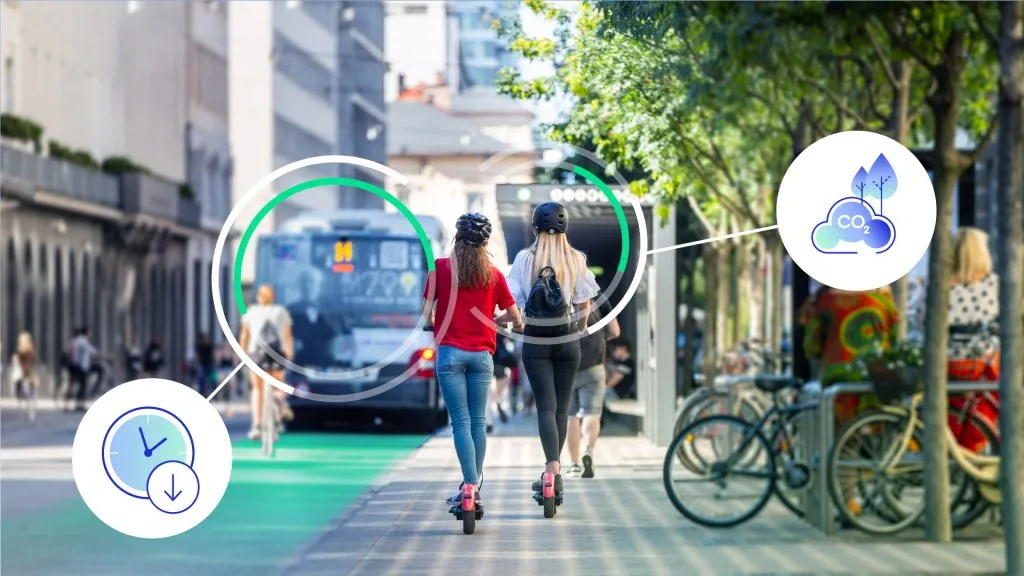The urban landscape of Kuwait is undergoing a remarkable transformation. Gone are the days of unpredictable traffic jams, inefficient public transit, and disconnected mobility systems. With the rise of the Internet of Things (IoT), Kuwait is entering a new era of smart transportation an era that is intuitive, connected, and human centric. In this article, we explore how IoT drives that change, reshaping the way people move, improving safety, and enhancing everyday life.
Enhancing Traffic Flow with Real Time Monitoring
Imagine roads that literally think ahead. IoT enabled sensors and cameras are embedded throughout Kuwait’s city streets and highways, constantly gathering real time data on vehicle density, speed, and congestion spots. This flow of information is fed into intelligent traffic management systems that adjust traffic signal timing dynamically. When traffic builds up in one direction, green lights extend; when roads clear, signals adapt. This fluid approach significantly reduces waiting times, lowers emissions, and creates a smoother driving experience for everyone.
Smarter Public Transit: Connectivity Meets Convenience
Public buses and metro services across Kuwait are becoming seamlessly connected through IoT platforms. Each vehicle is equipped with sensors that relay location, capacity, temperature, and mechanical health back to centralised dashboards. Passengers can track arrival times live on their smartphones and receive notifications if delays occur. Transit operators receive maintenance alerts instantly, avoiding breakdowns and ensuring service reliability. Together, these IoT features bring ease, trust, and predictability to public transportation.
Safety First: Intelligent Alerts and Emergency Response
Road safety in Kuwait takes a giant leap forward through IoT integration. Smart cameras detect traffic violations like speeding or red light running and automatically issue alerts to authorities or drivers. In case of accidents or sudden hazards (like pedestrians crossing unexpectedly), connected infrastructure triggers emergency notifications instantly. Ambulances and rescue teams reach scenes faster, thanks to real time location sharing. With IoT, the system becomes proactive, not reactive, significantly improving safety for all road users.

Efficient Parking: No More Endless Circling
Finding a parking spot in Kuwait’s busy districts has historically been frustrating until IoT entered the picture. Smart parking sensors embedded in lots and garages detect free spaces and feed data into mobile apps. Drivers can reserve a spot or be guided to the nearest available area, cutting down on wasted driving time and emissions. Operators benefit too, using occupancy data to manage capacity, adjust rates, and optimise layout. It is a smarter, greener, and more user friendly parking experience.
Eco Friendly Mobility through Data Driven Insights
Every piece of transportation data that flows through IoT networks in Kuwait contributes to better sustainability. City planners and traffic managers analyse aggregated travel patterns, peak usage hours, and route efficiencies. Armed with this knowledge, they can plan more efficient public transit lines, incentive off peak travel, and optimise road design. The result? Lower carbon emissions, reduced congestion, and a cleaner, healthier urban environment for every citizen.
Seamless Integration: Bringing It All Together
What sets Kuwait’s smart transportation projects apart is not isolated technology, but the integration of systems. Traffic lights, buses, parking zones, emergency services, and commuter apps all communicate with one another in a unified network. This cohesion allows holistic solutions. For instance: if a major road is congested, the system can reroute buses, redirect drivers, and inform emergency responders all in real time. The user experience becomes not just smarter, but smarter in concert.
Putting People at the Heart of Innovation
Above all, this IoT transformation in Kuwait is about serving people. Commuters spend less time in traffic and more time doing what they love. Public transit riders enjoy smoother journeys. Families feel safer thanks to faster emergency response. Business owners benefit from more predictable delivery times and logistics. Each technological upgrade is tailored to human needs, enhancing daily life rather than complicating it.

Future Horizons: What’s Next for Kuwait’s Smart Mobility?
The road ahead is filled with potential. Autonomous electric shuttles, predictive maintenance powered by AI, hyper connected multi modal transit hubs, these innovations are on Kuwait’s horizon. As 5G networks expand, IoT sensors will become even faster and more responsive. Imagine near instantaneous communication between vehicles, streets, and control centres, where traffic lights anticipate pedestrian crossings before they happen, or curb side robotics manage deliveries in real time. With each advancement, mobility becomes an even more seamless part of city life.
Conclusion: A New Era of Mobility in Kuwait
Kuwait’s embrace of IoT in smart transportation is transforming the nation’s mobility landscape, from traffic flow and public transit to safety and sustainability. Technology is not just futuristic, it is friendly and functional, designed to meet real human needs. With every sensor installed, every algorithm refined, and every system integrated, Kuwait moves closer to a smarter, safer, and more efficient future on wheels.
This is not just smart transportation. This is thoughtful, human centred mobility redefined by IoT for the benefit of every person on the road.
Do follow Gulf Magazine on Instagram.
Also Read – Facial Recognition Revolutionises Qatar Airports with Speed and Security



